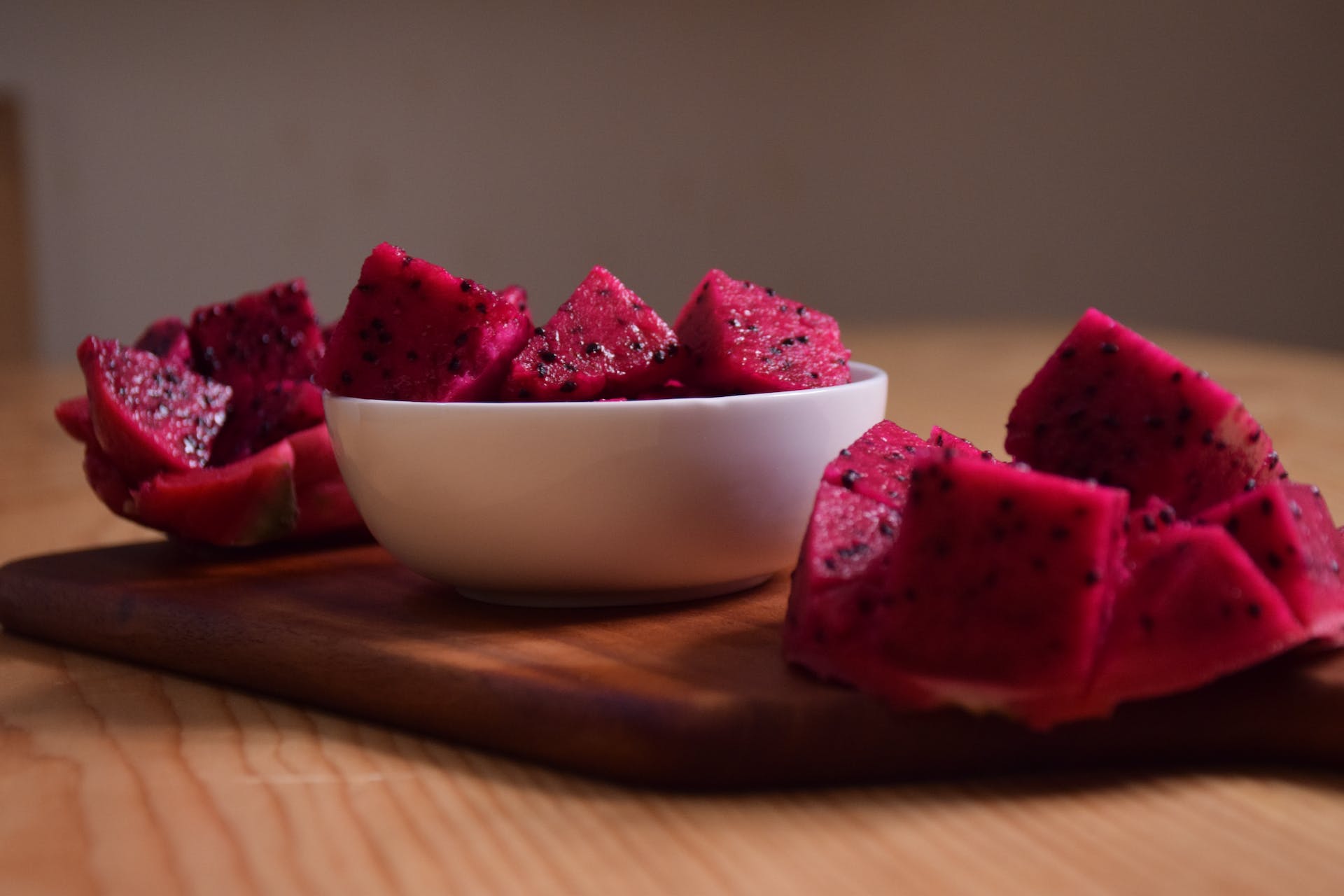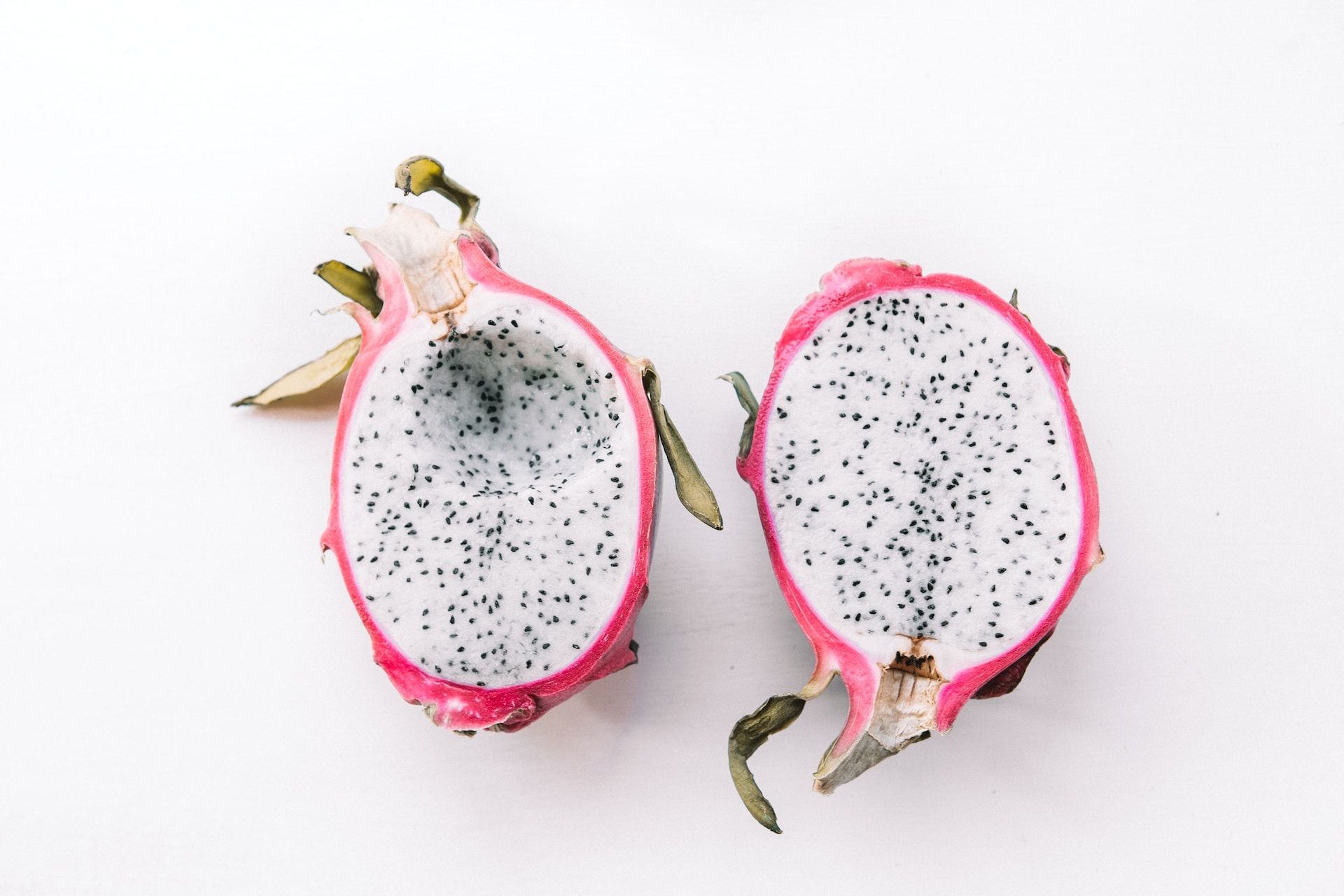
3 mins read
Red Dragon Fruit: Varieties and Characteristics
I've always been fascinated by nature's vivid colors and unique shapes. Among the most striking examples of this natural beauty is the dragon fruit. Known as pitahaya, this tropical fruit offers multiple varieties, shapes, colors, and flavors. This exotic cactus creates magnificent flowers but is primely recognized by the vibrant color of the fruit. Let's dive into one of the different types of dragon fruit!
Red Dragon Fruit Varieties
Bloody Mary – Hylocereus Polyrhizus
The Bloody Mary dragon fruit, a common red-fleshed variety from the genus Hylocereus and the species polyrhizus, is celebrated as a superfruit, owing to its high antioxidant content derived from its deep red flesh. This variety thrives in warm climates; its natural habitat stretches across Colombia and Panama.
Cebra – Hylocereus Polyrhizus
The Nicaraguan variety stands out from its peers and is renowned for its dark flesh and skin. This fruit is a delight, balancing flavor with a notable sweetness, typically weighing around 1 pound. Like other red varieties, ''Cebra'' is also packed with antioxidants. However, the Nicaraguan dragon fruit requires cross-pollination, as it is self-sterile, necessitating another species for the fruit set.
El Grullo – Hylocereus Ocamponis X
Originates from El Grullo in Jalisco State, Mexico, this variety is renowned for its exceptional tolerance to heat and cold. Adapting well to diverse conditions, El Grullo's growth is characterized by solid and greyish-green stems covered with a protective gray coating, which is particularly beneficial for withstanding extreme temperatures. Even if the fruit is sweet, there's a unique beet-like flavor that makes a versatile choice in the kitchen.
Hawaiian Red – Hylocereus Costaricensis
The Hawaiian Red is a distinguished hybrid from the Hylocereus genus and Costaricensisis species. This fruit is perfectly round, has a firm red flesh, and a pleasant tart flavor reminiscent of cherries.
Houghton – Hylocereus Setaceus Spp.
Houghton is characterized by its robust growth, with meaty, olive-green stems. Resembling Hylocereus setaceus in size and shape, its branches feature thick, small spines along the rib line. They can extend over five feet in length. The fruits are small, ranging from a quarter to half a pound, and oval-shaped. This variety is excellent for fresh consumption, making jams, garnishes, or as a juice ingredient in various drinks.
Red Jaina – Hylocereus Spp.
Belonging to the Hylocereus genus with an unspecified species, it stands out as a prolific fruit producer once it reaches maturity. Red Jaina is known for its impressive fruit yield, with each fruit typically weighing between three-quarters to one pound. This fruit offers a semi-sweet taste where it reaches its full potential in the kitchen.
Tricia – H. Ocamponis X H. Undatus
Tricia is a specially developed dragon fruit variety, a cross between Hylocereus Ocamponis and Hylocereus Undatus. This plant is known for its vigorous growth and attractive greyish-green stems. These stems are coated with a gray layer that helps protect the plant from extreme temperatures, both hot and cold. The red-fleshed fruit is known for its pleasing sweetness, devoid of acidity or aftertaste, and often described as having a sweet beet flavor.
Black Velvet – H. Ocamponis X S. Coniflorus
Black Velvet is an exquisite hybrid variety of dragon fruit (H.Ocamponis X S.Coniflorus), honored for its strikingly dark exterior and deep pink flesh. This variety encapsulates a blend of aesthetic appeal and delightfully sweet and juicy, with a slightly tangy flavor, making it a unique addition to the dragon fruit family.
Conclusion
Magenta, red, purple, or white flesh, no matter how it's categorized, is a tasty and refreshing fruit. Native from Central America but found in Southeast Asia to Southern Mexico, the climbing cactus has gained popularity worldwide for its brightly colored fruit and tropical flavor.
The dragon fruit looks unique, but they often have a slight kiwi, pear, or watermelon flavor. They all contain edible black seeds and are rich in vitamin C and high in fiber and magnesium. Dragon fruit is healthy and ready to eat; you can scoop the flesh, cut small cubes, or include it in various recipes.
Even if you are not in a tropical and subtropical region, pitahaya can grow well in your house. Explore and have fun gardening!



